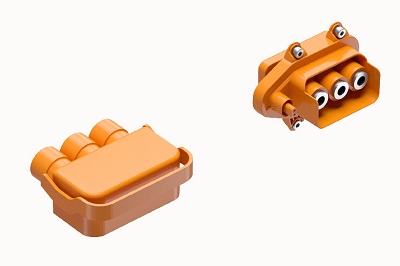Flame retardants play a vital defensive role in saving property and lives by decreasing the fire risk associated with the usage of highly combustible materials in products such as plastic, textile and many more. As such, the current breed of flame retardants are a diverse group of chemicals that has witnessed rapid growth in sales due to the rising number of newly constructed commercial buildings, and manufacture of aircrafts, vehicles, and electronics/electrical appliances.
The global flame retardants market was valued at US$8.20 billion in 2021, and is expected to reach US$13.60 billion by 2030, with a CAGR of 5.9% during the forecast period 2022-2030, according to Research and Markets. North-America has been dominant in the consumption of flame retardants compared to other regions due to the increasing fire safety regulations and because it has around 8 million buildings which require fire safety measures. Additionally, the region of Asia Pacific will witness greater consumption of flame retardants due to the rapid rise in population and migration of people from rural to urban areas making it densely populated.
On the other hand, because of the known health risks associated with flame retardants such as endocrine disruption, reproductive toxicity, and cancer, the producers of flame retardants have responded to these concerns, and are developing more environmentally compatible products, mainly non-halogenated alternatives which are sustainable flame retardant chemicals. The latest innovations in the flame retardants sector were recently introduced by Tolsa, LANXESS, BASF and THOR GmbH.
ADINS® FR as alternative to antimony trioxide
In a recent development, Tolsa has announced that it has translated its unique ADINS® FR technology to nylon (PA) matrices for applications in electrical/electronics, automotive, textile, and transportation markets. ADINS® flame retardant technology offers a versatile range of additives for polymers that act as synergists with halogen and halogen-free flame retardant systems. They are a highly suitable alternative to antimony trioxide (ATO), one of the most widely used FR additives but whose safety is under regulatory study due to toxicity and carcinogenicity concerns. In addition, the variability of ATO prices and supply issues have generated additional concerns among end users. However, in some applications such as E&E, its use is unavoidable despite the fact that increased hydroxide FR load generates processability and performance issues. Therefore, there is a need for safer synergists like ADINS® that can reduce the ATO dosage without damaging performance and processability.

ADINS® significantly improves the behaviour of plastic components under fire conditions.
ADINS®synergists also drastically reduce dripping, thus allowing a V-0 rating for different systems, such as polyamide and polyester. ADINS® synergists promote char formation and create a physical barrier, protecting the material and reducing heat and smoke emission as well as volatile organic compounds (VOC). The required dosage of ADINS® is low, ranging from 1 to 5% for commonly used formulations, however, the impact on properties is significant, even allowing a reduction in FR doses.
Due to its stability, ADINS® Protection allows for reduced amounts of active substance to obtain the same antimicrobial activity, thus increasing its durability and reducing cost of the formulation and its environmental impact. In collaboration with Delta Tecnic, Tolsa completed a study of the antimicrobial activity in PVC formulations for swimming pools. It was verified that the resulting PVC, incorporating ADINS® Protection additives, was biocidal against two of the most common bacteria in swimming pools (E. Coli and P. Aureuginosa). In addition, an aging treatment in a Suntest XXL+, which simulates half (3000h) and all (5000h) of the material lifetime, was completed. After this aging treatment, the antimicrobial activity versus the same bacteria remained practically unchanged, according to Dr. Marta Sacristán, Technical Manager for Tolsa’s Functional Additives. ADINS® Protection is also very active against all enveloped viruses, including Coronavirus types, Norovirus, Rotavirus and Adenovirus, according to European Standard 14476:2013+A2:2019. Products comply with the European Directive on toy safety (2009/48/EC).
ADINS® significantly improves the behaviour of plastic components under fire conditions, enabling their compliance with the most stringent international health and safety regulations such as the European Construction Products Regulation (CPR) or the Railway EN45545 regulations.
Halogen-free, flame-retardant PBT compound for high-voltage connectors
Plastic components are often exposed to high temperatures along with very strong currents and high voltages. Plastic connectors, for example, must remain electrically insulating under these conditions and must not allow tracking to occur. For these high-voltage connectors, LANXESS has tailored a new PBT (polybutylene terephthalate) compound that is halogen-free flame-retardant and hydrolysis-stabilised. “One strength of the structural material is that its outstanding electrical properties are hardly dependent on temperature and moisture in the typical operating conditions of high-voltage connectors. It can be used at temperatures of up to 150 °C,” explains Dr. Bernhard Helbich, Technical Marketing Manager Key Accounts at LANXESS’ High Performance Materials business unit.

LANXESS introduces new PBT compound that is halogen-free
flame-retardant and hydrolysis-stabilised.
The compound is a first representative of the new Pocan BFN HR product range and is characterised by a high level of volume resistance and dielectric strength. For example, the latter is well over 30 kilovolts per millimetre at temperatures of up to 140 °C (IEC 62431-1). In the CTI test (Comparative Tracking Index, IEC 60112), the material achieves CTI A 600, the highest class possible according to the standard. This makes it highly tracking-resistant, which reduces the risk of short circuits and defects caused by creepage currents and caters to the growing need for miniaturized connectors. But it can also be used at voltages higher than 600 V. The connector design for direct current systems can be optimised for up to 1,500 V in accordance with the design guidelines of the standard IEC 60664 / VDE 0110-1. The tracking resistance of the compound also hardly diminishes after long-term thermal aging at 120°C or after climate testing.
The material, which is reinforced with 25% by weight of glass fibres, is very stable to hydrolysis. In specimen tests based on the stringent SAE/USCAR-2 Rev. 6 long-term hydrolysis tests of the US Society of Automotive Engineers (SAE), it achieved Class 3 – a good rating. Its good flame-retardant properties are demonstrated by the fact that it passed the UL 94 flammability test of the US testing institute Underwriters Laboratories Inc. with the excellent classification V-0 with a test specimen thickness of 0.75 millimetres. The compound can also be coloured in bright colours, such as orange, which is increasingly being used in electric vehicles to identify live, plastic-encased components.
Meeting stringent fire safety requirements
BASF and THOR GmbH are combining their expertise in non-halogenated flame retardant additives to provide customers with a comprehensive solution that will enhance the sustainability and performance for specific plastic compounds, as well as meet stringent fire safety requirements. Both companies are active members of the Phosphorus, Inorganic and Nitrogen Flame retardants Association PINFA and work closely to deliver sustainable polymeric systems that withstand ignition and fire propagation during their service life. The combined expertise provides customers and end-users with information highlighting the synergistic benefits of BASF’s halogen-free flame retardant Flamestab® with THOR’s phosphonates AFLAMMIT® technologies, for polyolefins which is typically a challenging flame resistance application.

BASF and THOR GmbH combine their expertise in
non-halogenated flame retardant additives.
“A thorough and multidimensional assessment of an additive solution is essential to shorten the time to market. The closer our suggested formulations are to the requirements of the end-users, the shorter the development time and costs for our customers. At THOR, we work continuously on improving our flame retardants and their performance in the desired plastics compounds. Depending on the market needs, a huge variety of fire safety standards are available for testing our own developed flame retardant formulations. As a service, our project partners, such as BASF, provide us with newly formulated plastics films, moulded or extruded specimens for evaluation of performance,” explains Armin Eckert, BU-Head of Performance Chemicals, THOR GmbH.
“Providing superior fire safety to a plastic part while maintaining other characteristics such as mechanical performance and light stability is a real challenge,” explains Dr. Achim Sties, Senior Vice President, Performance Chemicals Europe, BASF. “BASF technical experts are hard at work to provide solutions to meet our customers’ requirements and leverage our strong experience and network to respond with cost effective and sustainable technological solutions. Together with THOR, we focus on technical combinations that help shorten the journey for a formulator or a converter to reach their flame retardancy target and progress efficiently towards certification in a complex norm and testing environment.”
- This article also appears in the International Plastics News for Asia - October issue. To read the magazine, click here.














